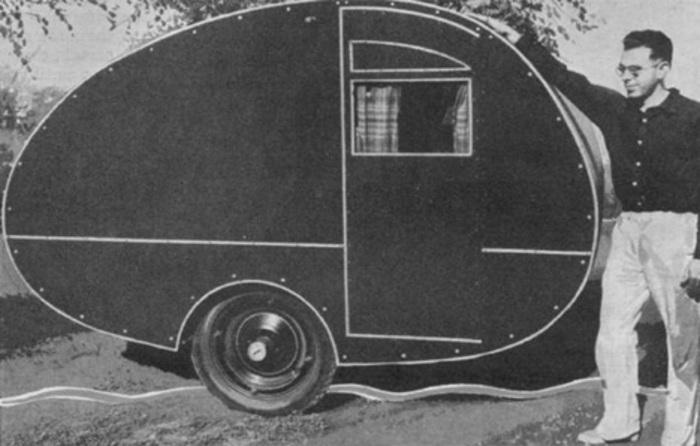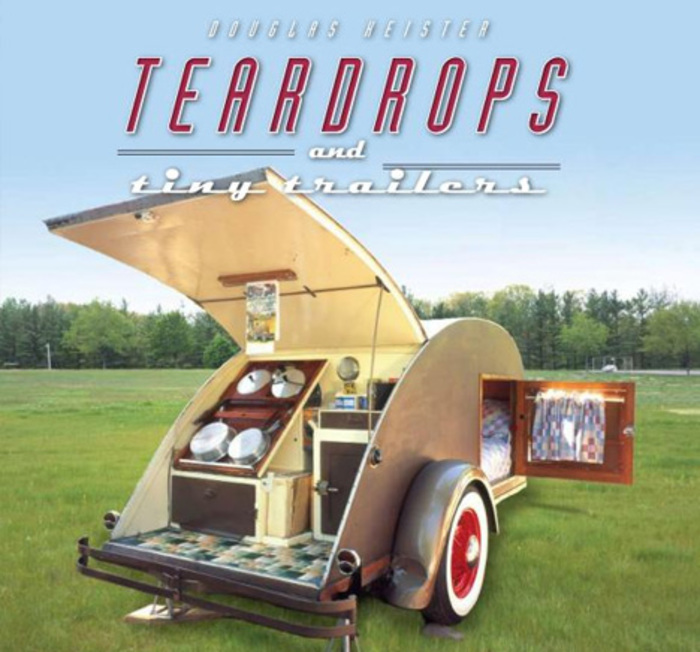Vintage Teardrop Trailer Plans

With so much focus these days on small spaces and mobile living, it would be a mistake to forget that the classic teardrop trailer has been around for well over fifty years. In that time, there have been countless innovative variations on the basic shape, style and functionality of this core design.
Teardrop trailers were introduced as far back as the 1930s – not too long after the advent of mainstream, mass-produced automobiles for the public. While the details varied, most original designs focused on simplicity: streamlined shape, lightweight materials and a plan that called for standard dimensional plywood sizes (4 by 8 feet). This old black and white illustration of trailer plans lays it all out in detail.
Some of the most ingenious space-saving aspects of the teardrop comes from the need to make maximum use of limited interior square footage. The resulting cabin is reserved for, at most, sleeping quarters for two and a bit of storage, while cooking, lounging and other related functions are relegated to the outdoors by necessity.
To this day, vintage teardrop trailers represent one of the cheapest and easiest do-it-yourself portable building types out there, and people continue to customize them in all kinds of creative ways. Sub-cultures have formed around fans and owners, while books like Teardrops & Tiny Trailers have been written about the phenomena and history as well. Stay tuned for contemporary teardrop projects and production companies yet to come.
Here’s a description of the Teardrops & Tiny Trailers book by Douglas Keister, available on Amazon:
“Buckle up as Douglas Keister takes you for a decidedly retro ride in the world of diminutive travel trailers in Teardrops and Tiny Trailers. The demand for vintage trailers-the smaller the better-has risen dramatically in recent years, with the most in-demand trailers being ‘teardrops,’ first manufactured in the 1930s and containing just indoor sleeping space and an outdoor exterior kitchen. Also profiled in the book are ‘canned ham’ trailers, whose shape resembles the profile of a can of ham; small-size examples of America’s most beloved vintage trailer, the Airstream; miniscule gypsy caravans in Europe; and fiberglass trailers made in Canada. Two hundred color photographs showcase these trailers’ sleek exteriors, retro-styled interiors, and, in many cases, the restored classic cars that tow them. Teardrops and Tiny Trailers includes a resource section chock-full of places to locate vintage trailers, clubs to join, and rallies to attend.”







